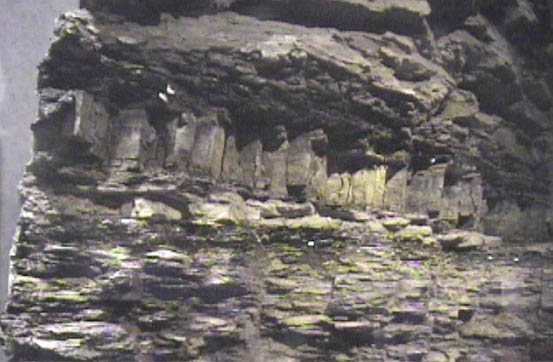Iridium-Rich Layer
The element iridium was brought into the public view with the discovery of a subsurface layer which was greatly enriched in iridium compared with its normal abundance. This layer was found many places around the globe and came to be associated with the boundary between the Cretaceous and Tertiary Periods, referred to as the K-T Boundary on the geological age scale.

 |
The fact that a layer like this has been found at several locations scattered around the world suggests a large-scale atmospheric suspension of the material, such as would occur upon the impact of a sizable asteroid. Coupled with the presence of dinosaur fossils below this layer, but not above, this evidence has led to the asteroid model for the extinction of the dinosaurs. This cross-section of the strata containing the iridium-rich layer is on display at the Smithsonian Museum of Natural History. The thickness of the layer appeared to be 3-4 cm. |
| Minerals |
| HyperPhysics*****Geophysics | R Nave |